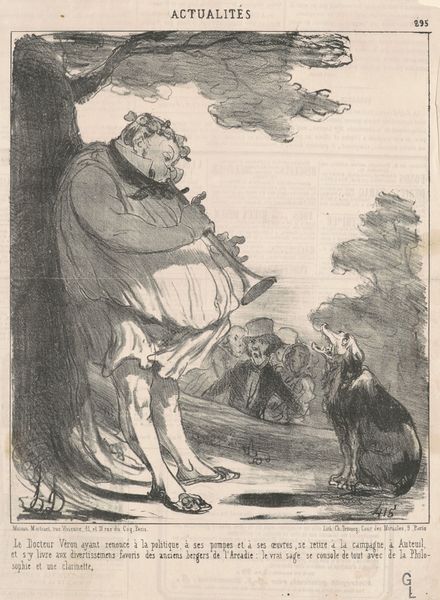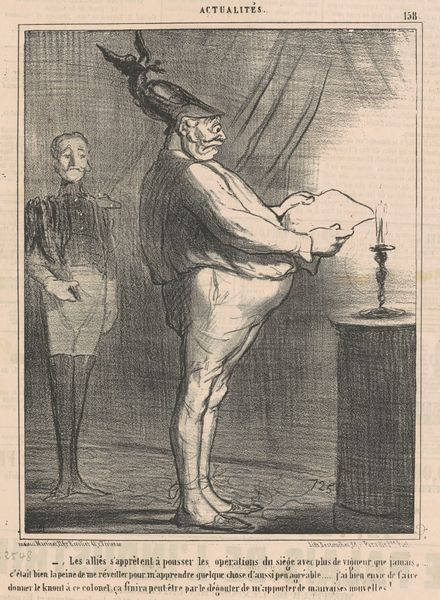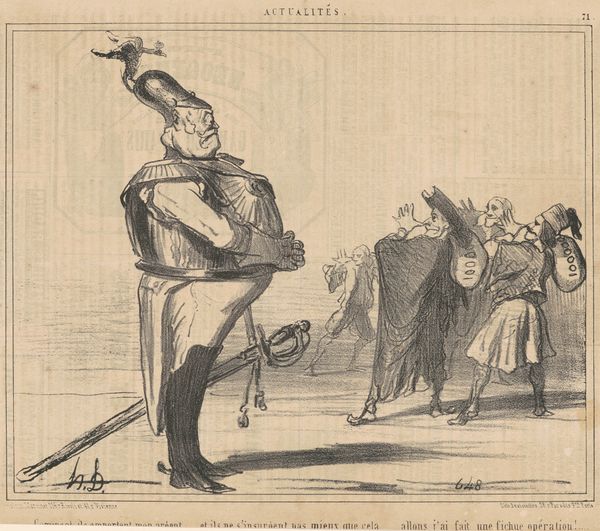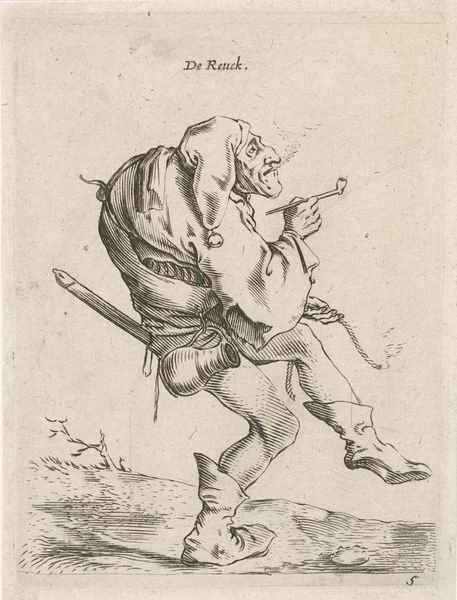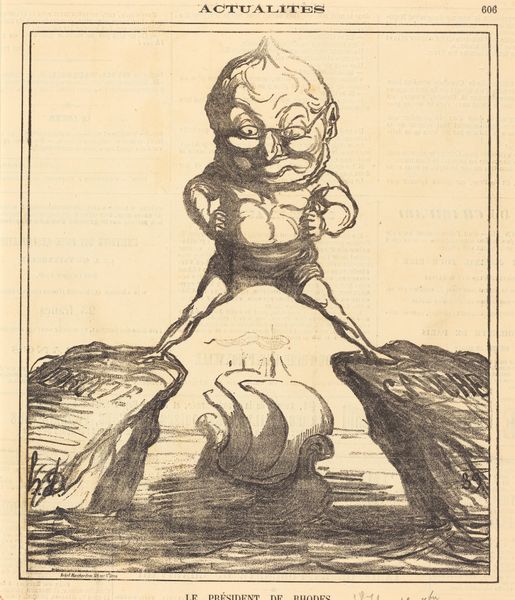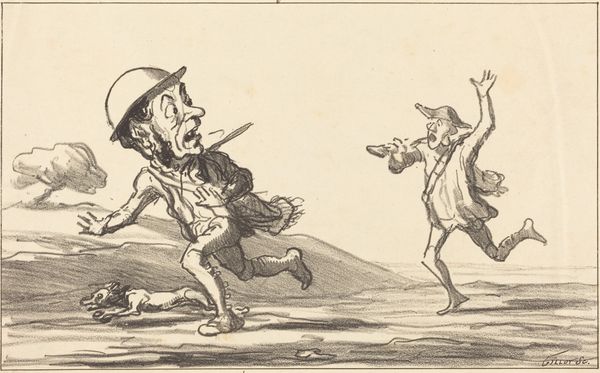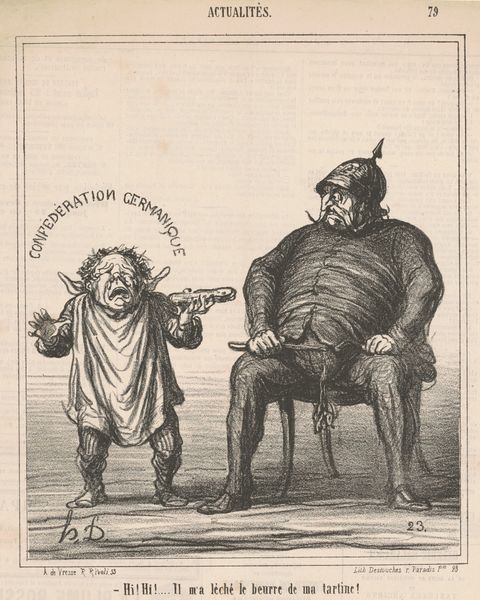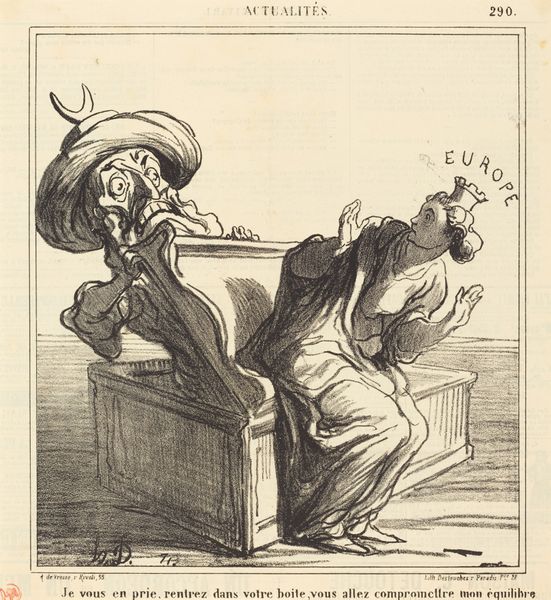
lithograph, print
#
narrative-art
#
lithograph
# print
#
caricature
#
figuration
#
romanticism
Copyright: National Gallery of Art: CC0 1.0
Curator: Well, this certainly grabs your attention, doesn't it? We're looking at Honoré Daumier's lithograph, "Le triomphe de la loi du 31 Mai," which translates to "The Triumph of the Law of May 31st," dating back to the 19th century. It’s quite a pointed piece, published as part of his 'Actualités' series. Editor: Triumph? That’s...optimistic, at best. To me, it reads as pure burden. There's a heaviness conveyed by those strained figures; their caricatured faces suggest anything but triumph. More like exhaustion. Curator: Absolutely, the grotesque exaggeration is key here. Notice the central figure, almost overflowing in form, wearing a cap emblazoned with “Loi du 31 Mai"—this is the Law itself, rendered as bloated and oppressive. Editor: And consider who’s carrying her. These are the politicians, right? Servile, contorted… Their faces show the price of propping up this ‘Law.’ They appear far from triumphant— it’s a cynical portrayal of power dynamics at play. I'm curious about that date; May 31st... What legislation are we talking about here? Curator: It's likely referring to a restrictive electoral law passed that year. Daumier frequently targeted the hypocrisy and corruption of the ruling class under Louis-Philippe. In the inscription it is written that it is very heavy, that one cannot go on! This is truly an illustration of it, literally showing their burden! It reinforces the symbolism that is portrayed with this character's exaggeration. Editor: So, this image isn’t celebrating a triumph at all; it’s exposing an oppressive political reality. Daumier is using caricature as a form of protest, highlighting how laws can burden and distort even those who uphold them. The fact that this was reproduced and distributed as a print also points to a wish to incite action and stir consciousness in society! Curator: Precisely. It reflects the artist's deep concern for the socio-political climate of his time. One can feel the emotional weight of injustice resonating even today. Editor: This isn’t just a historical document; it's a reflection on how laws can become tools of oppression, and those meant to serve the people can become their carriers and victims. The image is more potent if the socio-political situation is fully unpacked and contemplated.
Comments
No comments
Be the first to comment and join the conversation on the ultimate creative platform.
